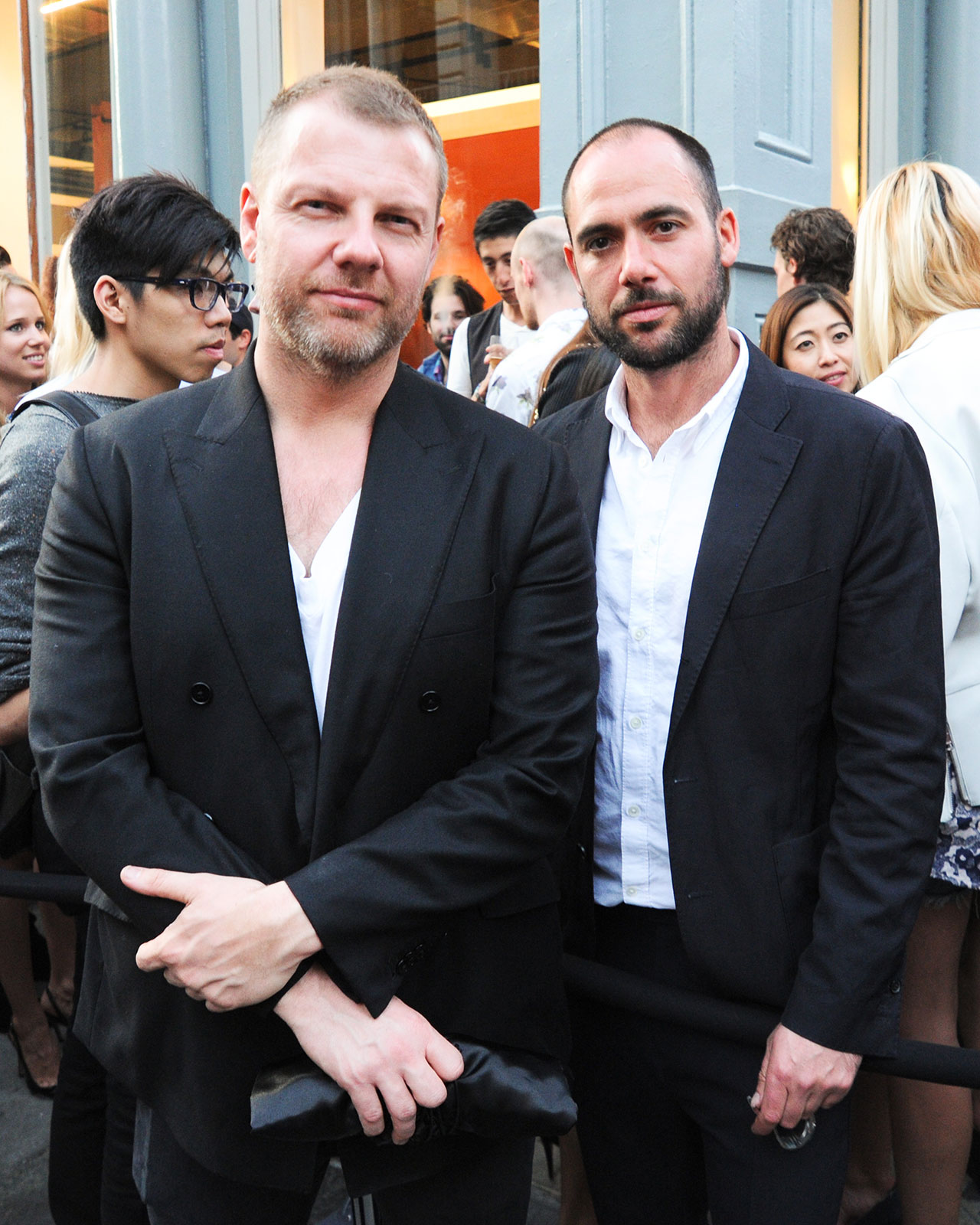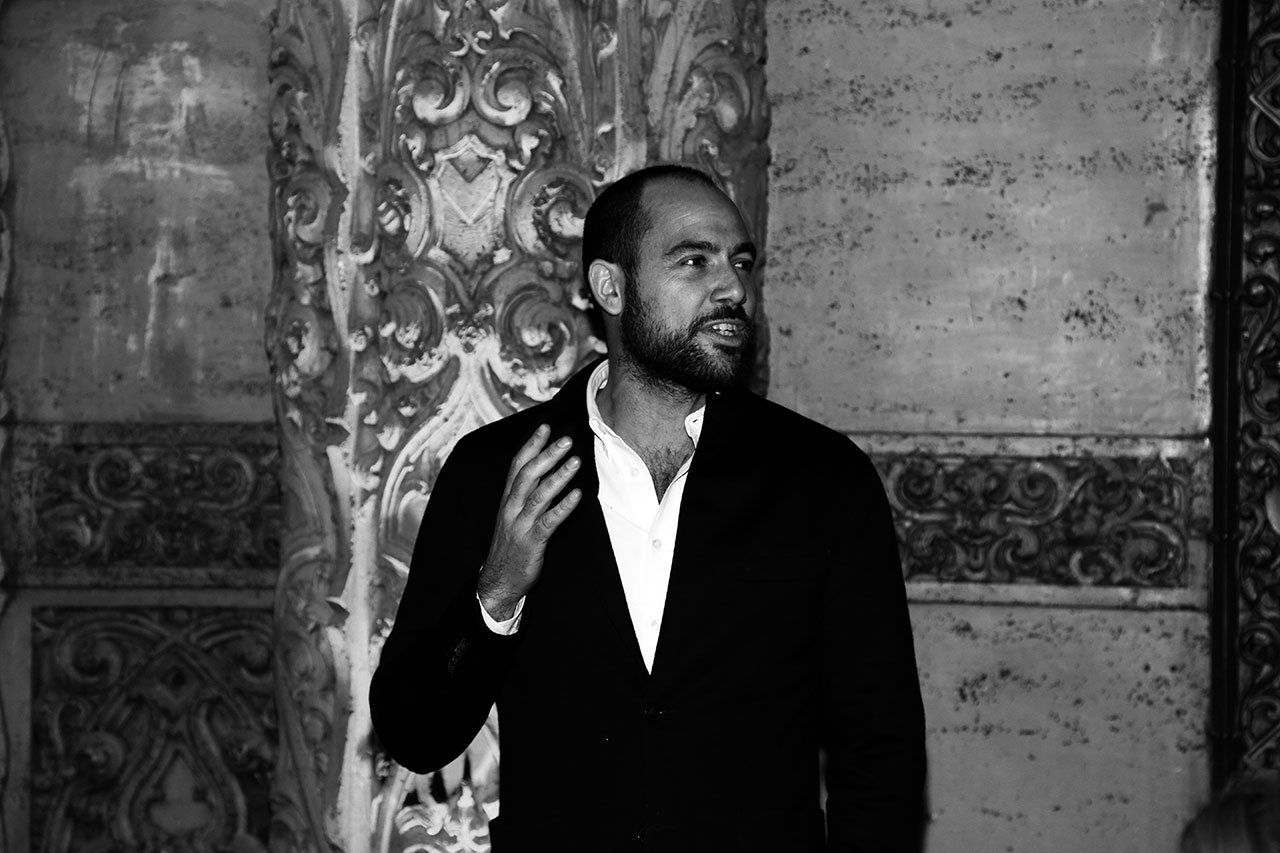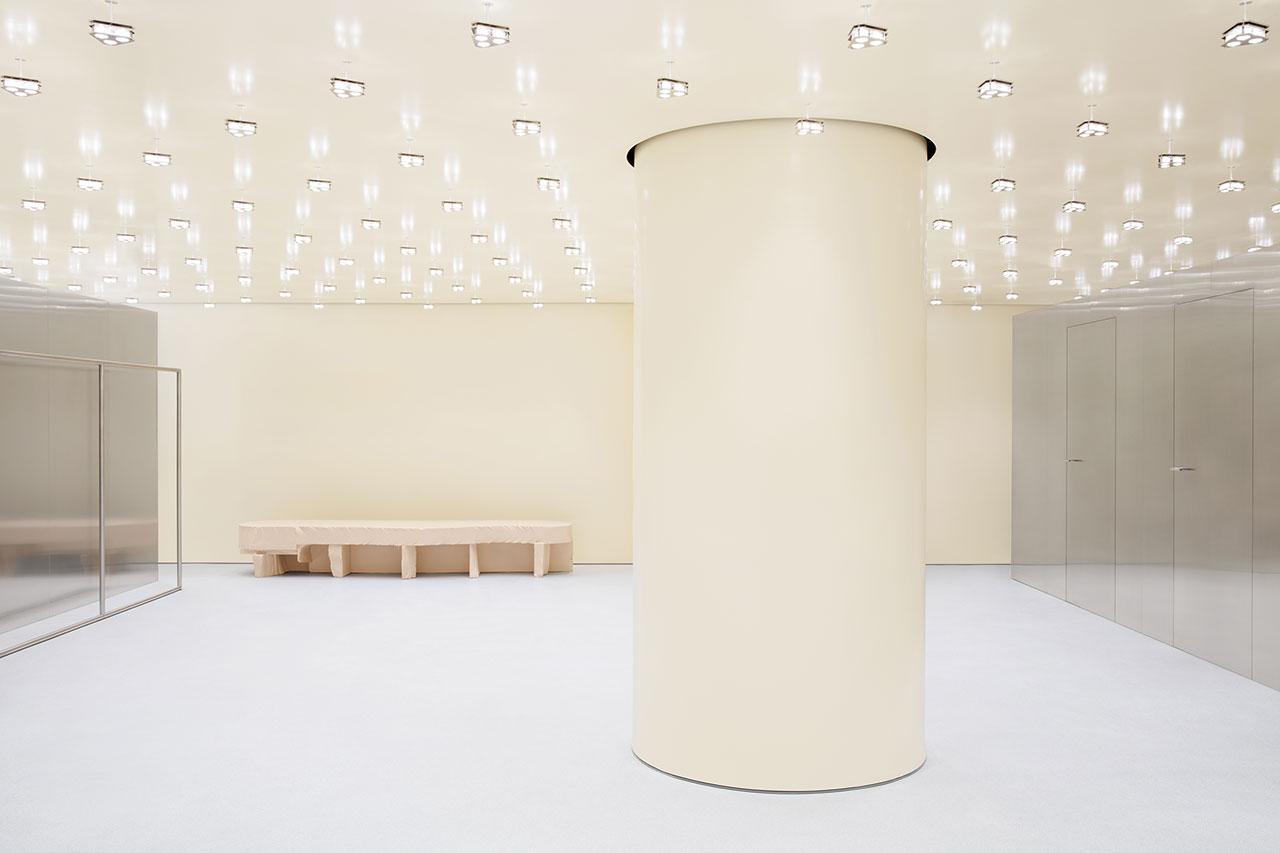News feed

From left, Acne Studios co-founder and creative director Johnny Johansson alongside the brand’s executive chairman and co-owner, Mikael Schiller
Credit: Courtesy of Acne Studios
When Mikael Schiller arrived at Acne Studios in 2001, it was during a particularly painful adolescent growth spurt.
Schiller, a recent graduate of the Stockholm School of Economics, was famously offered a role at the company on the strength of an investment memorandum he wrote for the label – then a multidisciplinary creative collective encompassing film, music, graphic and furniture design – as it teetered on the verge of bankruptcy. Schiller and the company’s co-founder and creative director, Johnny Johansson, effectively pulled it back from the brink of ruin by restructuring its retail and ready-to-wear offering in its Swedish homeland. In the years since, Schiller has been a key figure in guiding the business’s growth from fledgling creative studio into the global fashion powerhouse it is today.
“It has been a fantastic journey so far,” Schiller recently told GRAZIA, reflecting on his company’s considerable growth since he first joined now 16 years ago. “I think that Johnny and I accomplished a good balance and dynamic between the business and creative part at an early stage. We are a creatively driven company, but we also want our choices to make sense from a larger business perspective. Today we are a global company with stores in many different parts of the world and a global e-commerce [offering]. This has made us more structured and more long term in our planning.” As for his own growth during that same period, one which has seen a graduate become an executive chairman and co-owner of a company that, in many ways, has established a widely-emulated school of Scandinavian fashion thought?
“I think I am a bit more chill and balanced now,” says Schiller. “For both the company and myself, I think we have gained access to some people and institutions that maybe wasn’t given 16 years ago.”

Caption: Courtesy of Acne Studios
Now in its 20th year, Acne Studios is arguably an institution in its own right. Its calling card, denim and leather jackets aside, is that singular shade of pallid pink – one that has become synonymous not only with the brand but a great deal many more commercial and creative entities targeting their thoughtfully designed and carefully curated product offerings at the ripest marketing subset, Millennials. In a way, it’s almost as though Miranda Priestly’s cerulean edict has been born anew for a new generation of aesthetically minded consumers with a predilection for pink. But to Schiller’s mind, even in a world where the brand’s colourful calling card has spawned legion imitators, the brand’s product will always be their most important point of difference. He’s particularly fond of their sneaker offering for Autumn. “With this said, in my world there are many different aspects that make up the product: the packaging, shopping experience, the service, the staff, et cetera, is for me also part of the ‘product’,” says Schiller. “Yes, the landscape is more competitive, but I think pushing our product and being progressive design- and production-wise is part of our core. I also believe that combining streetwear with designer clothing is part of our DNA and something that will continue to be highly appreciated from our customers in the years to come.”
Today, Acne Studios has grown to encompass 54 bricks-and-mortar retail locations worldwide, added to a network of more than 650 wholesale outlets in over 66 countries worldwide. Eighteen months ago, Schiller arrived in Sydney to begin scouting locations for their 54th store, eventually settling on a long-vacant and expansive shopfront on the corner of King and Elizabeth Streets in the city’s central business district. Its neighbours include Chanel, Gucci, Bulgari, Prada and Miu Miu – a sure enough sign that Acne Studios are ready to play, more or less, in the fashion’s biggest leagues. “We look at each city and try and find areas and spaces that we like,” Schiller says, accounting for the (admittedly top line) method behind the brand’s retail expansion strategy. “We are based out of Stockholm where there is no real high-end fashion heritage. I do not think we, per se, are trying to play with the ‘very high rollers’, but rather find our own path and what is good and right for us.
“We have been opening stores for so many years now,” he continues. “In a way, I think the stores becomes a bit like tree rings: they tell Acne Studios story from a certain year. I guess that their largest common denominator is that we have always put our heart into finding the right space in each city and then designing it in a good way.”

A poured off-white terrazzo floor, pastel yellow walls and seating intended to appear organic in nature juxtaposes with the stainless steel fixtures and lighting installation at Acne Studio’s new flagship Sydney store, their 54th worldwide
Credit: Courtesy of Acne Studios
In keeping with the brand’s global store concept, it’s a world unto itself formed in between curvilinear stainless steel walls splicing through the pastel yellow landscape within. If this tree ring were to tell the story of the brand’s last year, it’s certainly a confident one: 390 square metres of space stock the full collections for both men and women, as well as the label’s latest offering Blå Konst, a long gestating consolidation of their signature denim range into a smaller edit of new permanent styles and washes. It’s the precise amount of control that those dimensions allow for that Schiller values most about the brand’s continued retail expansion, as well its plans to consolidate other product categories (on which he won’t be drawn further) in the near future. Plus, he still enjoys the instant gratification that traditional shopping experience brings, no matter your whereabouts.
With the new store, it’s clear Schiller and co are raising the stakes. The only thing that has been tempered is the ceiling which, like the windows, has been lowered to obscure the view from the world outside. An installation of 700 lighting fixtures, designed internally by the brand, in intended to resemble high-tech mushrooms sprouting from the ceiling in a uniform pattern canvassing the entirety of the space. In its invocation of fungi, it’s redolent of what what the German artist Carsten Höller once created for the brand’s downtown Los Angeles store – a giant toadstool sculpture emblematic not only of the sense of play that remains integral to the brand, but the dichotomy that continues to exist between the organic and synthetic in everything they do. Höller, based in Stockholm and a friend of Johansson, is famously obsessed with mushrooms as a motif in his surreal, scientific artworks. Does the brand share a similar fascination with mushrooms – the analogous, adolescent fungal blemishes of the natural world?
“Maybe we do,” laughs Schiller. “Maybe subconsciously.”
Tile and cover image: Courtesy of Acne Studios










